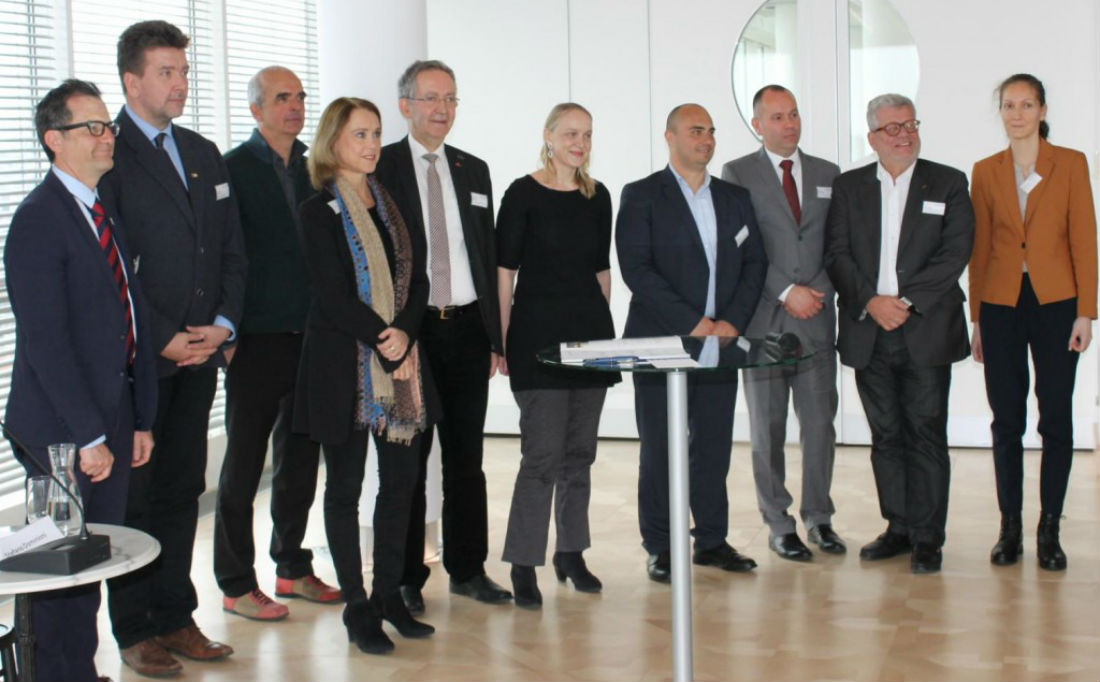Austria is lead partner of an EU project in the area of art, culture & tourism
These days an ambitious EU funded project, which should boost cultural and touristic ties in the countries of Central and Eastern Europe, has been kicked-off in Vienna. Following the heading “Danube Culture Platform – Creative Spaces of the 21st Century” a strategy will be developed to convey heritage sites and historical events along the Danube in a contemporary way to an international audience by means of innovative approaches using ICT and artistic interventions.
The Danube Culture Platform is implemented by the Federal Chancellery as the leading partner in cooperation with 8 partners from 6 Danube countries in the frame of the Interreg Danube Transnational programme. The aim is to involve further countries with the final result that all 14 countries taking part in the EU Strategy for the Danube region (EUSDR) are on board. Besides the EU member states Austria, Germany (Baden-Württemberg and Bavaria), Slovakia, Czech Republic, Slovenia, Croatia, Hungary, Romania and Bulgaria also the bordering states Bosnia-Herzegovina, Serbia, Montenegro, Republic of Moldova and Ukraine are included. Up to 85% of the total budget of 1.7 million are financed by the EU.
Probably what is the most exciting is the intention to explore undiscovered cultural heritage (“hidden heritage hot spots”) and historical events along the Danube and its water connections and to visualise them using art as a means.
Art – culture – tourism: These three terms provide a tight definition of the cornerstones of the Danube Culture Platform.
The European history forms the foundation. The cultural traces with their known and their yet to be discovered, hidden sites will be connected into new cultural routes. With the European Institute of Cultural Routes the project has managed to attract a renowned and strategically important partner. These routes have important integrative power and put themselves forward to cultural tourism exploitation.
Under the auspices of the Federal Chancellery of Austria a cultural policy network will be set up comprising representatives from 14 EUSDR countries and the fields of culture and tourism as well as NGOs.
The study “Mapping of places of history” will be the scientific basis of the project. It includes a mapping on cultural routes and interesting historic places with important data.
The banner of the pilot projects of the Danube Culture Platform is “Heritage reloaded”: The focus is on high tech and digital visualisation but also contemporary art and classical exhibition formats, which can be enriched with film or animation. As the hidden heritage sites are a major focus of the project the concept of making the invisible visible appears to be particularly relevant.
What does invisible mean in this context? It is about places which are unknown because they are situated below ground level, destroyed or repressed for political or societal reasons. These places, for example a Roman bathhouse in Upper Austria or the destroyed synagogue of Vidin in Bulgaria, will be digitally reconstructed through 3D-visualisations or given new life through artistic interpretation.
The work on the project started in Vienna on 20 April with the expert workshop “Discovering Hidden Heritage” on the theme of cooperation of culture and tourism. Two more workshops will follow: In the spring of 2018 the project deals with the facilitation of history in Linz and in the autumn of 2018 the focus is on the promotion of cultural exchange in Regensburg.
The EU project Danube Culture Platform will run until June 2019. Then the results will be summarised at the final conference and new models for innovative cultural routes will be presented.
Website: http://www.interreg-danube.eu/approved-projects/cultplatform-21
Project data:
– Budget: around € 1,7 Mio, 85% EU-funds
– Duration: 2,5 years, January 2017 – June 2019
– 9 financial partners from 6 countries
Project partners:
- Federal Chancellery of Austria, Division Arts and Culture (Lead) (AT)
- State of Upper Austria (Directorate Culture represented by the Museum of Uppera Austria and the Upper Austrian Cultural Quarter) (AT)
- Ministry of Science Research and the Arts, Baden-Württemberg (DE)
- Ministry of Culture of Romania (RO)
- Ministry of Culture of the Republic of Bulgaria (BG)
- Ministry of Tourism of the Republic of Bulgaria (BG)
- City of Regensburg (DE)
- Zsolnay Cultural Quarter, Pécs (HU)
- Danube Competence Center, Belgrad RS
- Associated Strategic Partners (no financial involvement): European Institute of Cultural Routes (LU), Ministry of Culture of the Republic of Serbia (RS), Academy of Arts Novi Sad, University of Novi Sad (RS), Akademie Schloss Solitude (DE), Municipality of Vidin (BG), Hungarian Limes Association (HU), MOTOVILA, Centre for the Promotion of Cooperation in the Cultural and Creative Sectors (SI), WGD Danube Upper Austria Tourism Ltd (AT), Cultural Network Lower Austria (AT), Danube Cultural Cluster (AT)



